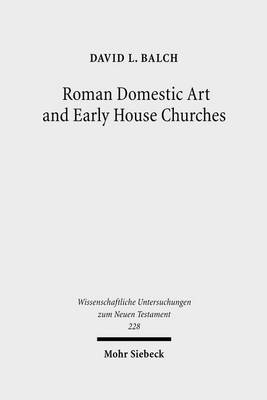In contrast to most studies of earliest Christianity that focus on texts, David Balch inquires into the visual world of the culture in which early Christians lived and worshipped. Jews and Christians outside Israel lived in Greek and Roman houses and apartment buildings. During earlier Republican and later Imperial periods, artists painted frescoes on the walls of their patrons' houses. Beginning in the mid-1700s, archaeologists began unearthing brilliantly colored domestic paintings, often of Greek (rarely of Roman) myths and tragedies, especially in Pompeii, Herculaneum, and Rome. The author inquires how visual representations seen daily might influence the understanding of Jewish and Christian scriptures read and heard in those same spaces as well as the meaning of rituals performed in domestic worship. Scenes from the tragedies of Euripides as well as visual representations of contemporary gladiatorial games make suffering, sacrifice, and death surprisingly present in Roman houses, themes not first introduced by Christian preaching or the Eucharist. Further, David Balch includes not only recent studies of domestic art, but also of Roman domestic architecture (domus and insulae) by British (Wallace-Hadrill), American (Clarke, Leach), German (Zanker, Dickmann), and Italian (Maiuri, Pappalardo) scholars, studies that affect descriptions of the social history of early Christianity.
- ISBN13 9783161493836
- Publish Date 16 July 2008 (first published 1 January 2008)
- Publish Status Active
- Publish Country DE
- Imprint JCB Mohr (Paul Siebeck)
- Format Hardcover
- Pages 320
- Language English
